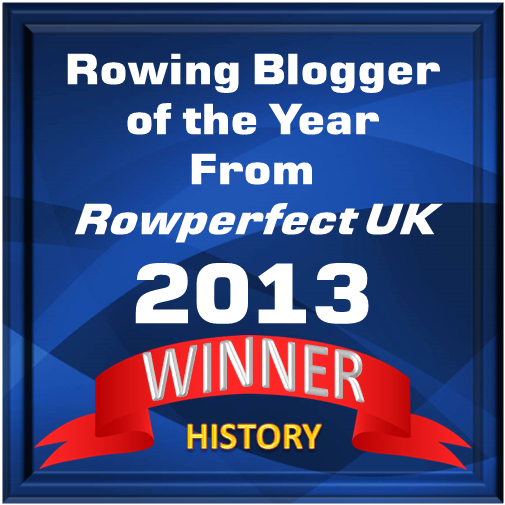“I enjoy Hear The Boat Sing very much. I have a question that should be simple, but I have yet to be able to find the answer myself. What is the correct name for the little caps that the English rowing clubs have, or used to have? I am familiar with photos of crews in their amazing looking blazers, usually with the caps with a very small visor - have never seen how one might purchase one… I hope American style baseball hats haven’t superseded them as they have a unique look. Thanks again for the great articles.” Bob, WA, USA
 British actor and comedian Michael Palin wearing his father's old rowing cap in the popular series Around the World in 80 Days - see also HTBS 24 August, 2009.
British actor and comedian Michael Palin wearing his father's old rowing cap in the popular series Around the World in 80 Days - see also HTBS 24 August, 2009.
This is a question that is right up HTBS’s Tim Koch’s alley. Tim of Auriol Kensington RC in London knows the answer of course… Tim writes,
Dear Bob - The caps that you refer to have no special name that I know of. They are often called ‘cricket caps’ in Britain as this is the last remaining sport in which they are in common use (though the baseball style cap is slowly taking over). In fact, the ‘cricket cap’ and also the ‘cricket jumper’ (called the ‘tennis sweater’ in the United States) were in common use from late Victorian times until the Second World War in many sports: cricket, rowing, soccer, rugby. Fancy embodied ‘honours caps’ were given to men chosen to represent their school, club or country and we still refer to the number of times a soccer or rugby player has played for England, Ireland, Scotland or Wales as the number of times they have been ‘capped’. Less fancy (though still colourful) caps were for everyday sporting use. I suppose the cricketers kept their caps the longest as cricket was the only sport where it was practical and indeed sometimes necessary to wear headgear while playing - like baseball.
Until the 1960s they were a common part of the school uniform for boys from both private and state schools so they are sometimes also called ‘schoolboy caps. I wore one myself.
 Famous rowing coach and writer, Rudie Lehmann is wearing his Leander cap in this drawing by SPY.
Famous rowing coach and writer, Rudie Lehmann is wearing his Leander cap in this drawing by SPY.
The five most famous rowing club caps still available (to members) are those of: Leander Club; Thames RC; London RC; Cambridge University Boat Club; and Oxford University Boat Club.
My club, Auriol Kensington, no longer has such caps. I have the only one in existence; you might have seen it in my video of Henley on HTBS (at 1 min 30 sec).
Everything you could wish to know on the subject is here.
If you wish to buy a cap, try these: http://www.walters-oxford.co.uk/rowing-caps.html and http://www.smartturnout.co.uk/products/cricket-caps.html
As they are made of wool, they can be rather warm but, as you are in Washington State, that may not be a problem for much of the year.
Hope this helps.
Best wishes - Tim
Postscript: Although, we did not have caps like these in the Swedish schools, I did have to wear one when I for a short time had joined a Scout group in town. I also received an old German 'rowing cap' from the late 1940s, early 1950s from an old member of my Swedish rowing club. It looks a little different from the English rowing caps and is made of cotton, not wool. - G.R.B.










































.jpg)






